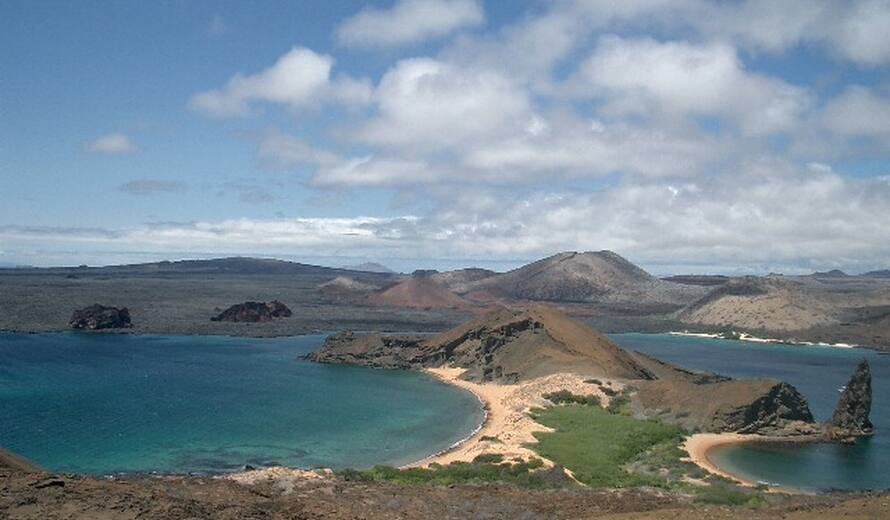UNESCO-IUCN Mission to Galápagos Islands World Heritage Site
A UNESCO World Heritage Centre/World Conservation Union (IUCN) mission is currently in Ecuador (April 8-12, 2007) at the request of the World Heritage Committee and at the invitation of the government of Ecuador, to assess the state of conservation of the Galápagos National Park and Marine Reserve. The mission will include high-level meetings with senior government officials from the Ministries of Tourism, Foreign Affairs and the Environment.
Participants in the mission include Mr. Kishore Rao, Deputy Director, UNESCO World Heritage Centre; Mr. Tumu te Heuheu, Chairperson of the World Heritage Committee; and Dr. Bernd von Droste of the World Conservation Union (IUCN).
Findings of the mission will be presented to the intergovernmental World Heritage Committee at its next session to be held in Christchurch, New Zealand, from June 23 to July 2 (see https://whc.unesco.org/en/185/ for more details). The World Heritage Committee is the governing body for the World Heritage Convention, comprised of 21 members elected from the 183 countries that have ratified the World Heritage Convention.
During its meeting, the World Heritage Committee will review the findings of the mission and agree on the actions that need to be undertaken to help ensure the long-term conservation of this site. The Committee has the option of inscribing the site on the List of World Heritage in Danger if it believes that the site is under serious ascertained or potential danger (see https://whc.unesco.org/en/guidelines/ paragraphs 177-191 for technical details).
Inscribing a site on the List of World Heritage in Danger is designed to bring about increased national and international cooperation in helping to eliminate the threats to a World Heritage site.
Previous UNESCO-IUCN Galápagos mission reports to the World Heritage Committee (2005, 2006) have consistently underlined the following major threats to the long-term conservation of the islands:
- Introduction of non-native (alien) plant and animal species from increased air and maritime traffic. The arrival of alien species in island ecosystems has been demonstrated to lead to massive extinctions in islands all over the world. See http://www.hear.org/galapagos/invasives/introduction.htm for more information.
- Illegal fishing. Up to 300,000 sharks are taken illegally from Galápagos waters every year exclusively to feed the Asian shark fin soup market. The illegal capture of sea cucumber, though still intensive, has dropped from earlier peaks due to the massive reduction in populations from overfishing.
- Inability to apply laws. Despite an excellent legal framework, national government institutions encounter difficulties in ensuring its full application.
- Illegal immigration and population growth. Despite laws controlling the movement of people from the continent to the Galápagos, an estimated 20% of the 30,000 or so residents of Galápagos do not have the necessary permits to live there. Increased population leads to greater risk of introduction and spread of alien species, and to higher pressure on scarce resources.
The Galápagos Islands World Heritage Site
The Galápagos Islands was the first site to be inscribed on the World Heritage List in 1978. The site was further expanded in 2001 to include the Galápagos Marine Reserve. Situated in the Pacific Ocean and straddling the Equator at some 1,000 km from the Ecuadorian coastline in South America, these nineteen major islands and nearly 100 minor islands, along with the surrounding marine reserve have been called a unique 'living museum and showcase of evolution'. Located at the confluence of three ocean currents, the Galápagos are a 'melting pot' of marine species. Ongoing seismic and volcanic activity reflect the processes that formed the islands. These processes, together with the extreme isolation of the islands, led to the development of unusual animal life - such as the marine iguana, the giant tortoise and the many types of finch - that inspired Charles Darwin's theory of evolution following his visit there in 1835. Since the establishment of permanent human settlements there, about 5% of the species of the Galápagos are estimated to have become extinct.
Today, 30,000 people live in three main settlements on the islands; most work directly or indirectly in tourism-related activities, the service sector and to a lesser extent in agriculture and traditional fisheries. Every year over 100,000 visitors, mainly from North America and Europe, fly into the islands to embark on a cruise.


